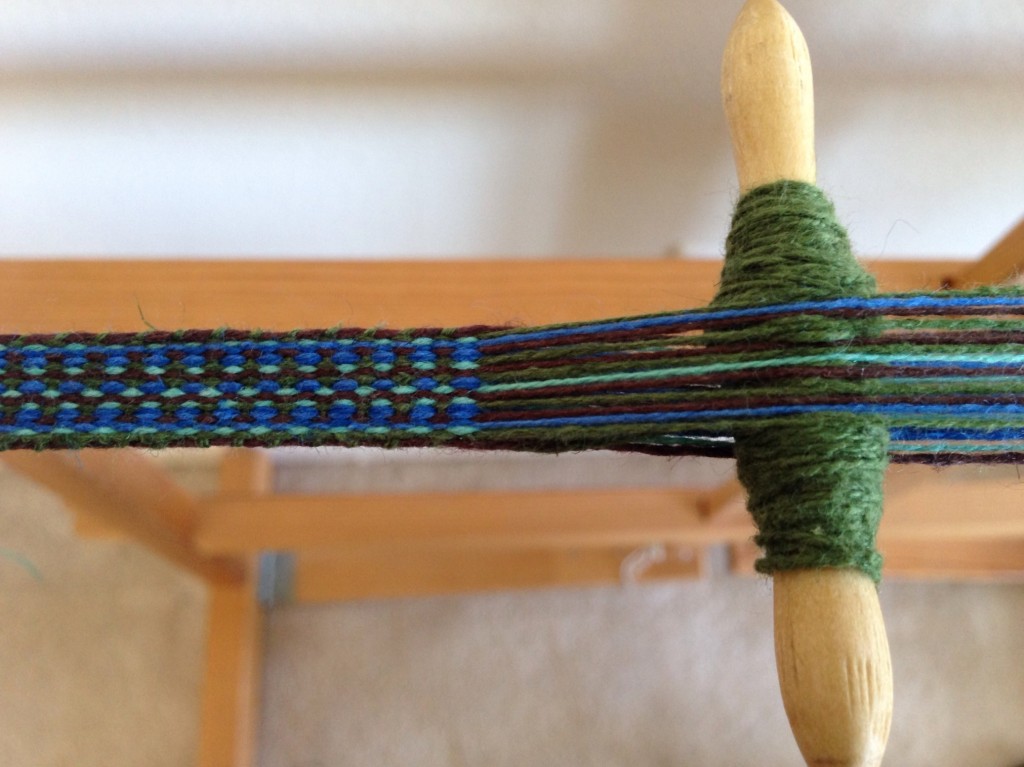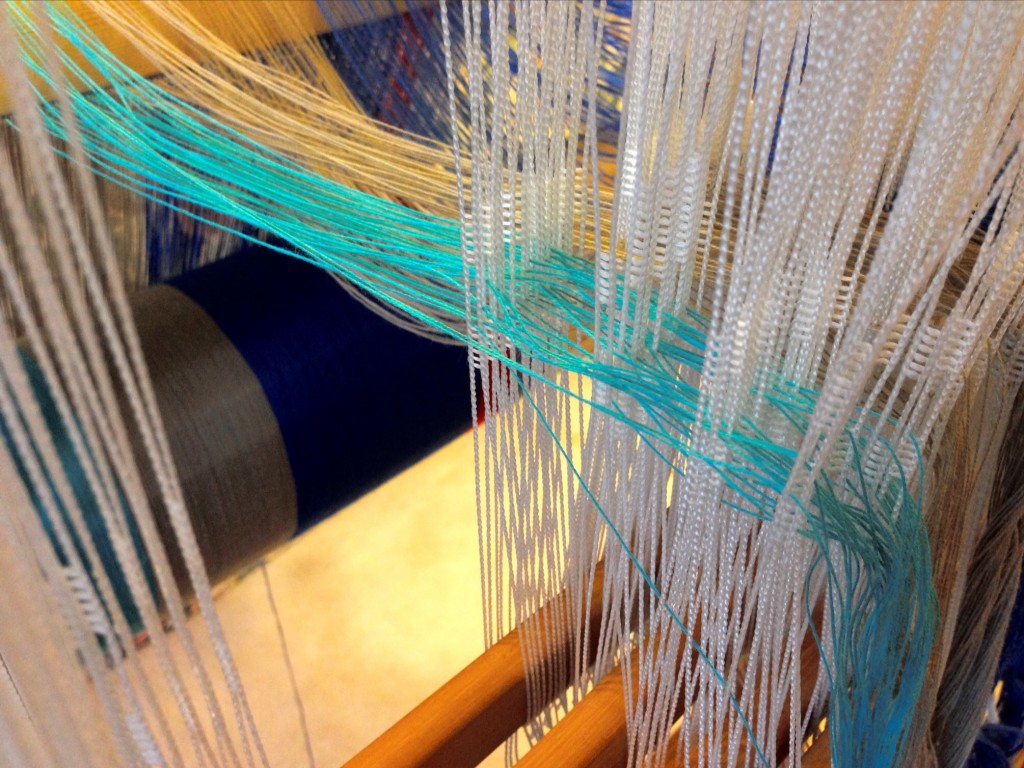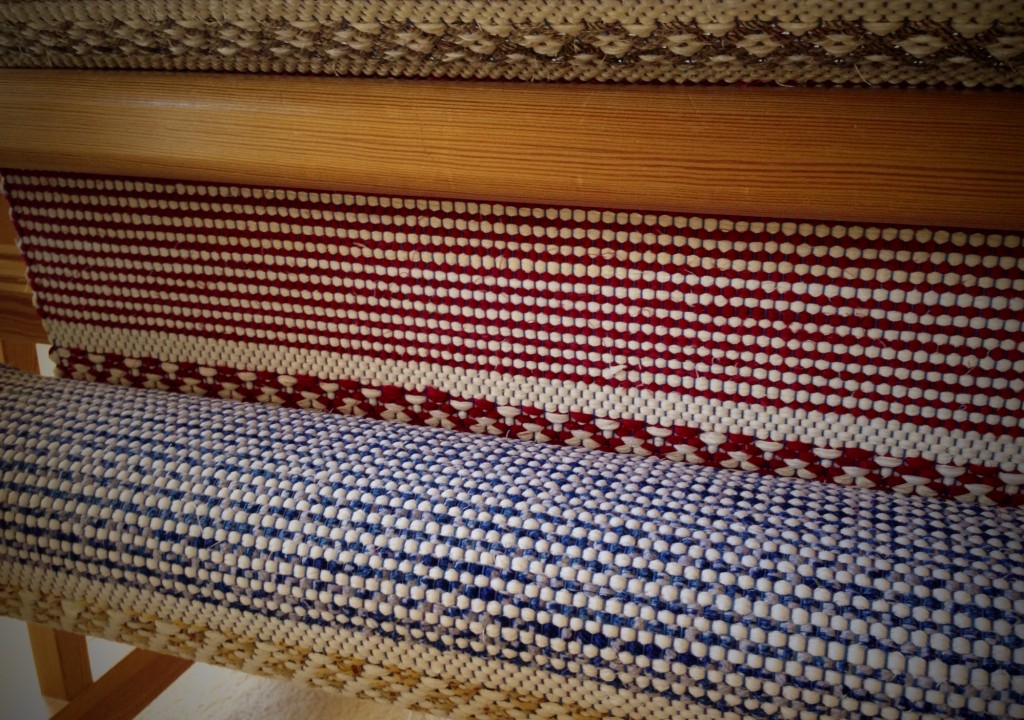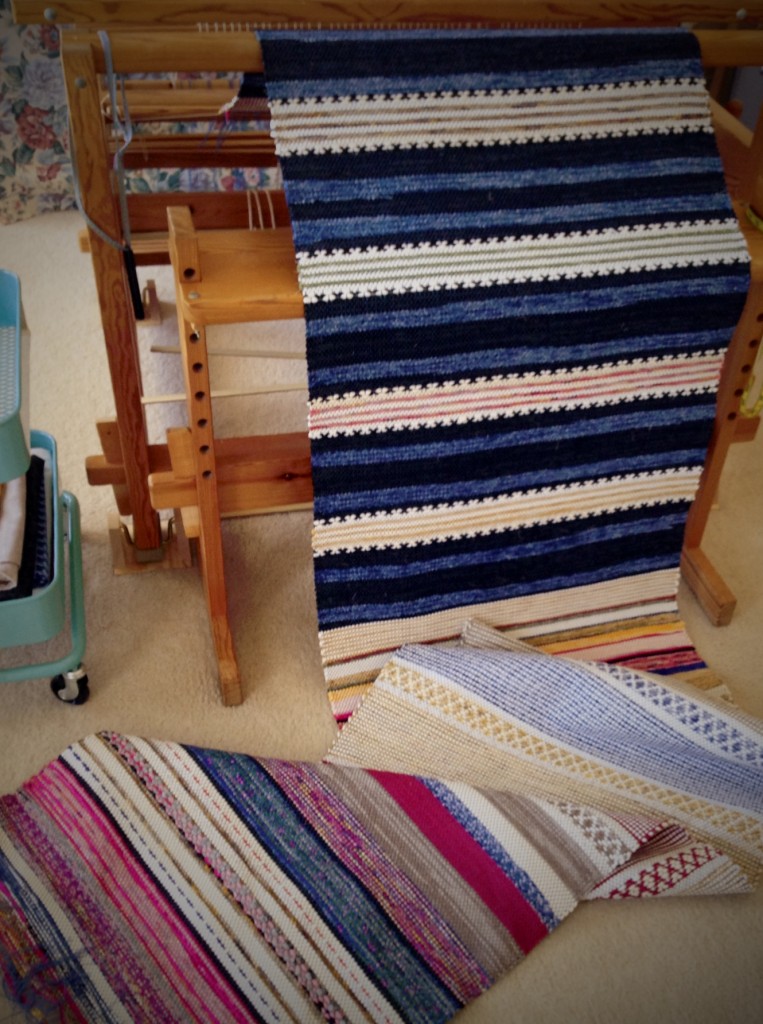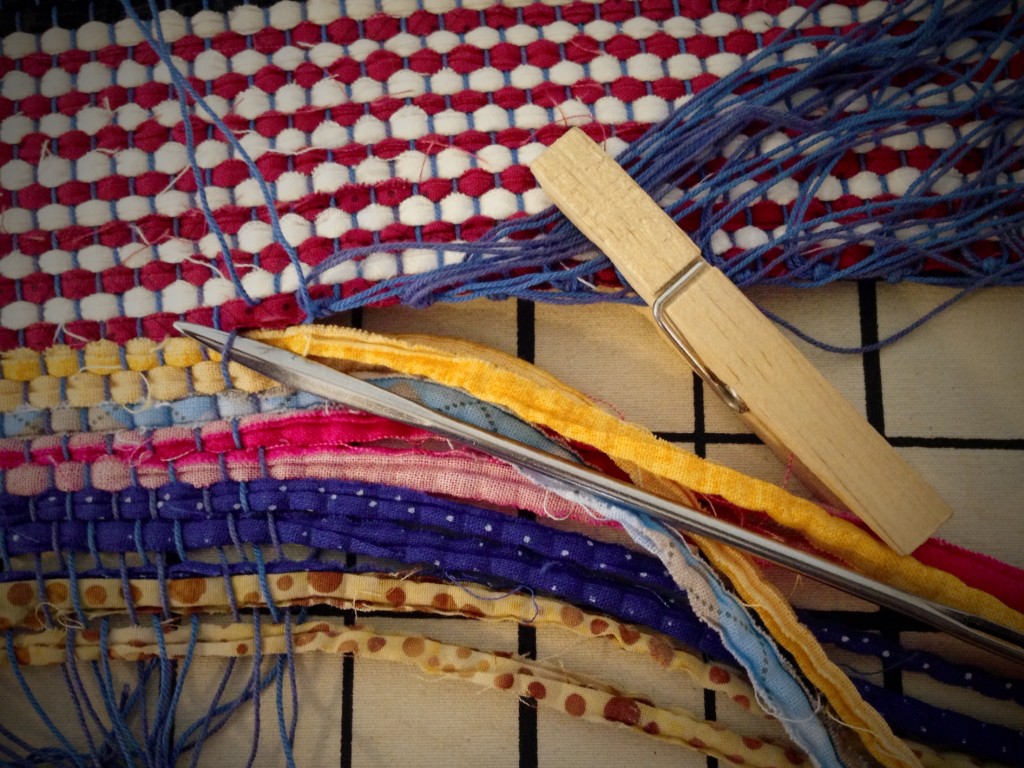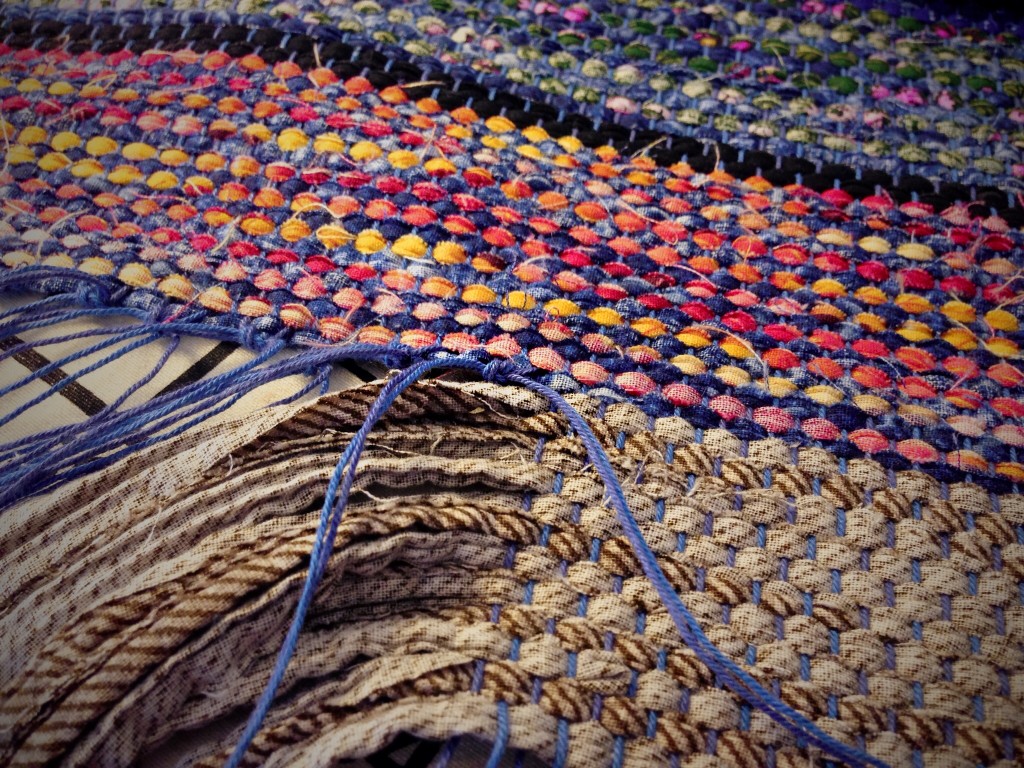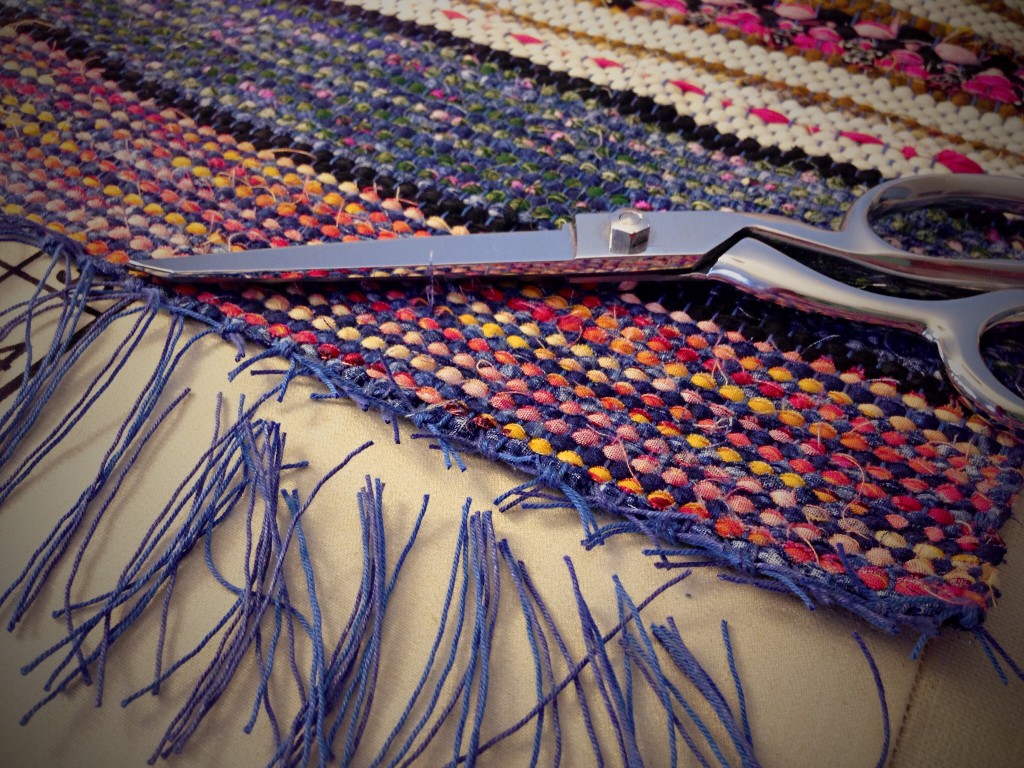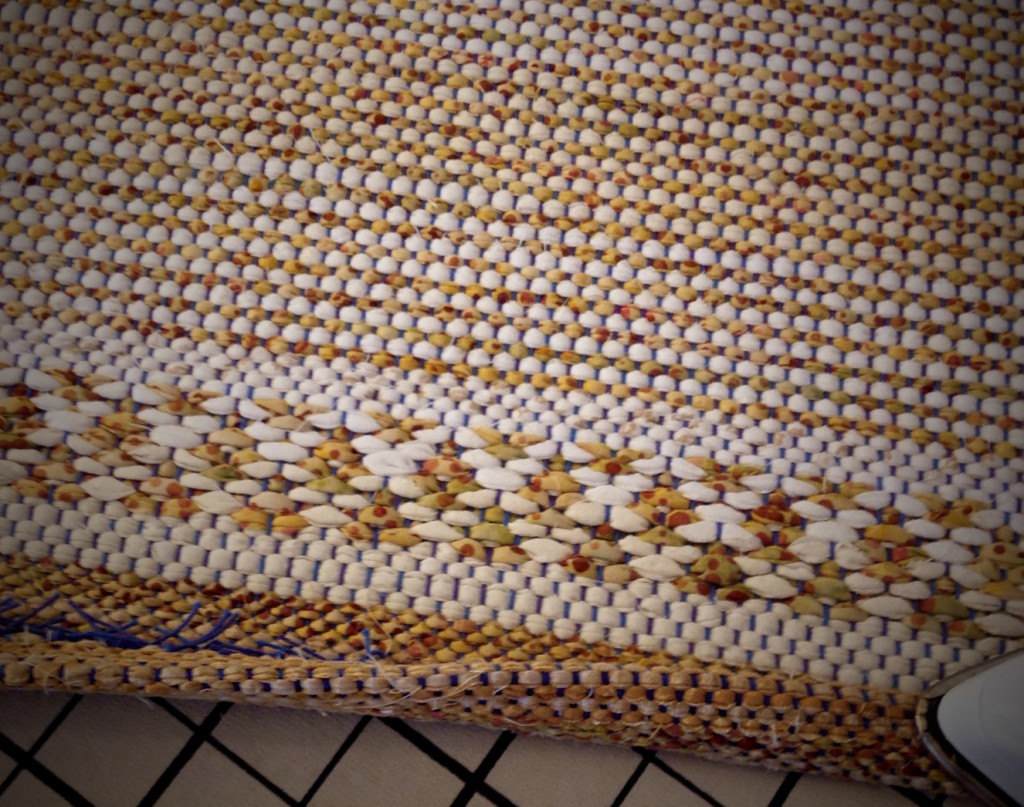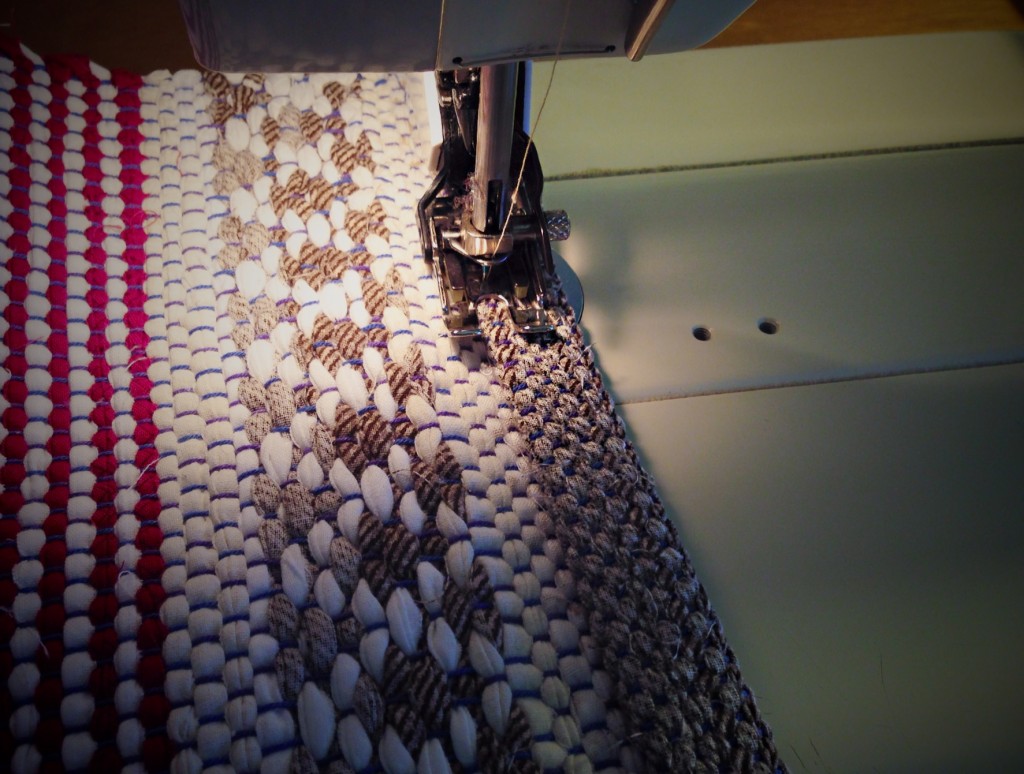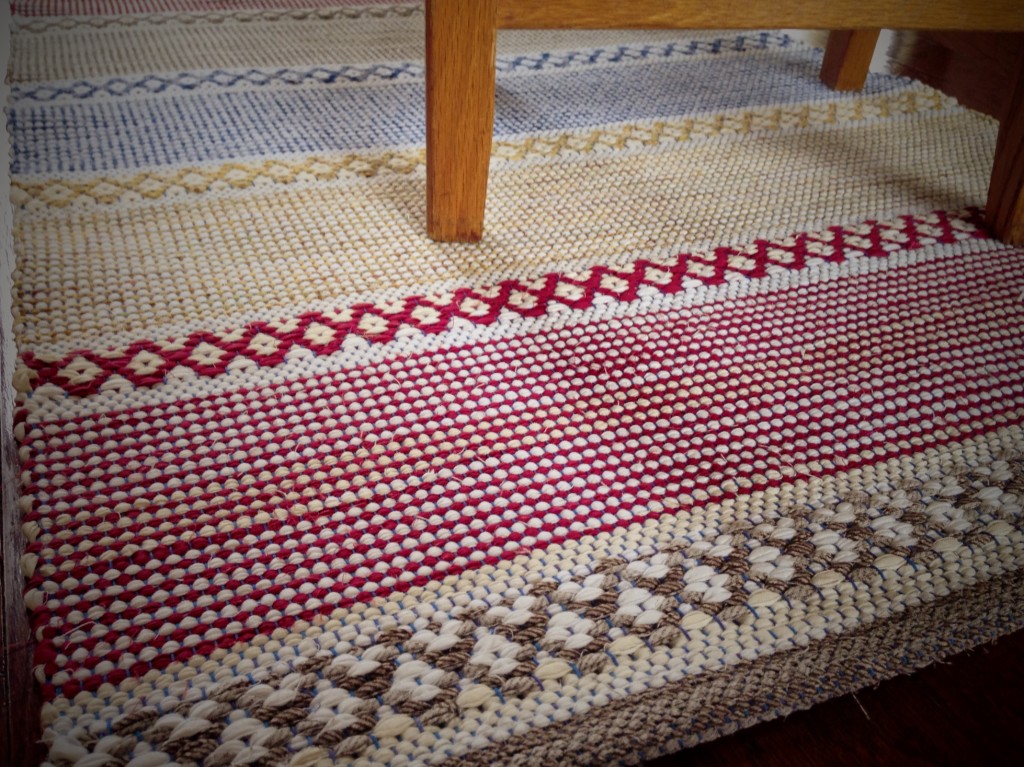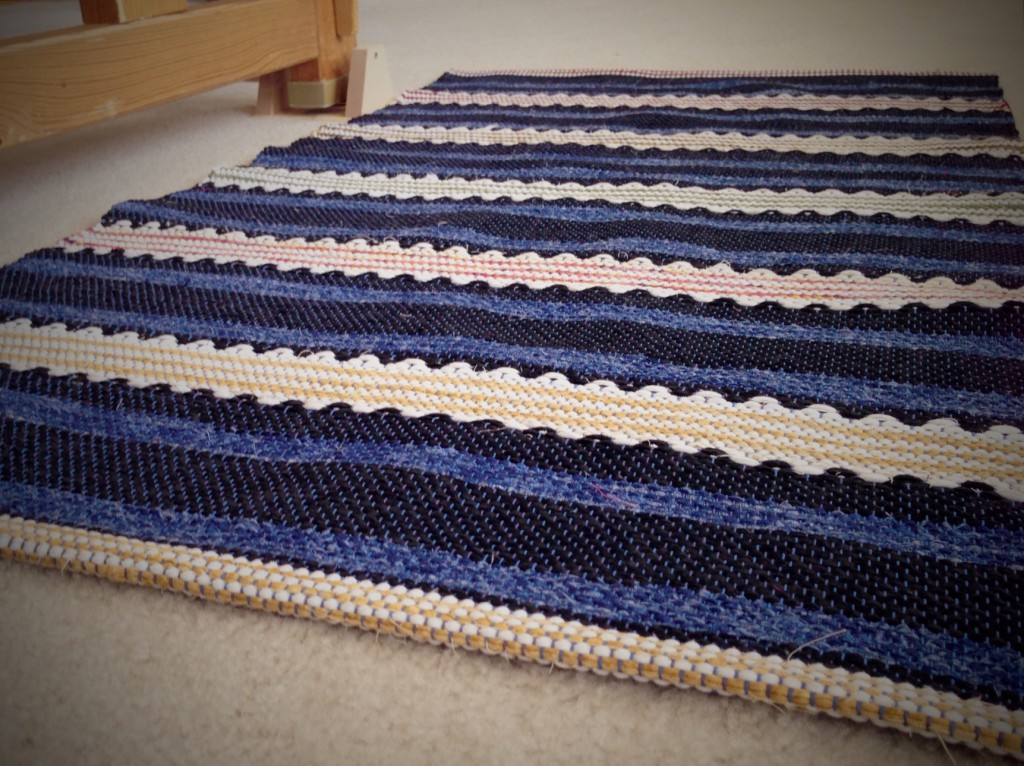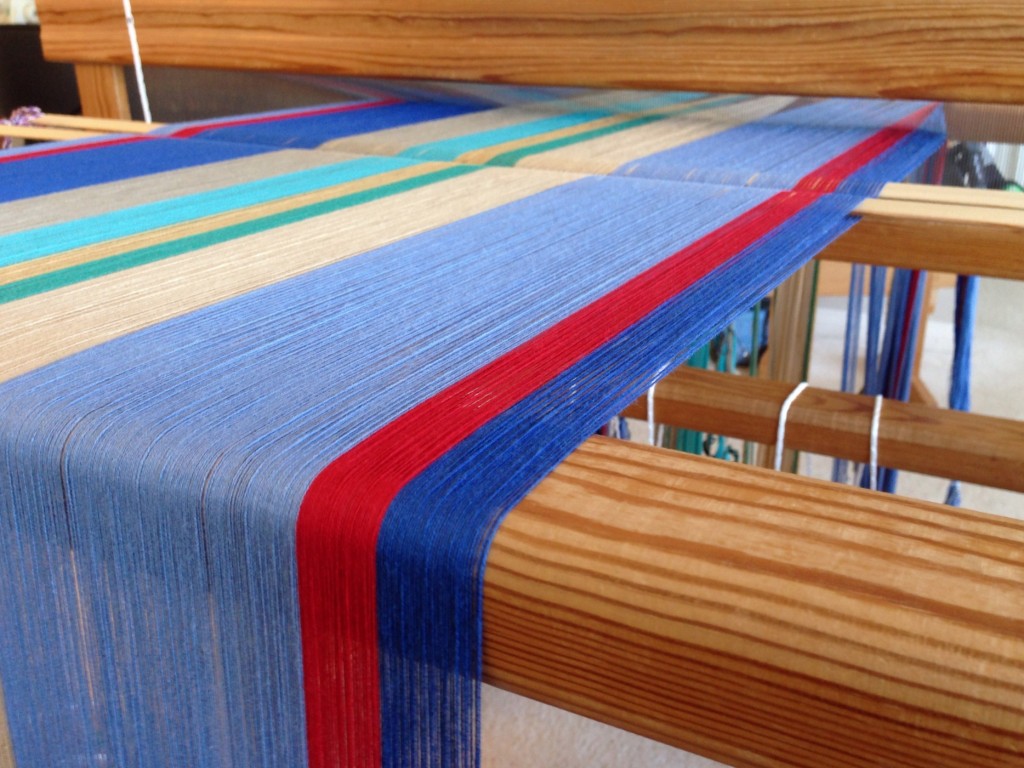I still had patterns I wanted to try in bound rosepath; but, alas, there is no more Brage wool yarn in my hands. I ran out of weft before I ran out of warp! With five colors of this wool weft, it seemed like the variations on this rosepath threading were limitless. Imagine how it would be if you had two or three times that many colors to work with! You might never find an end to all the design options!
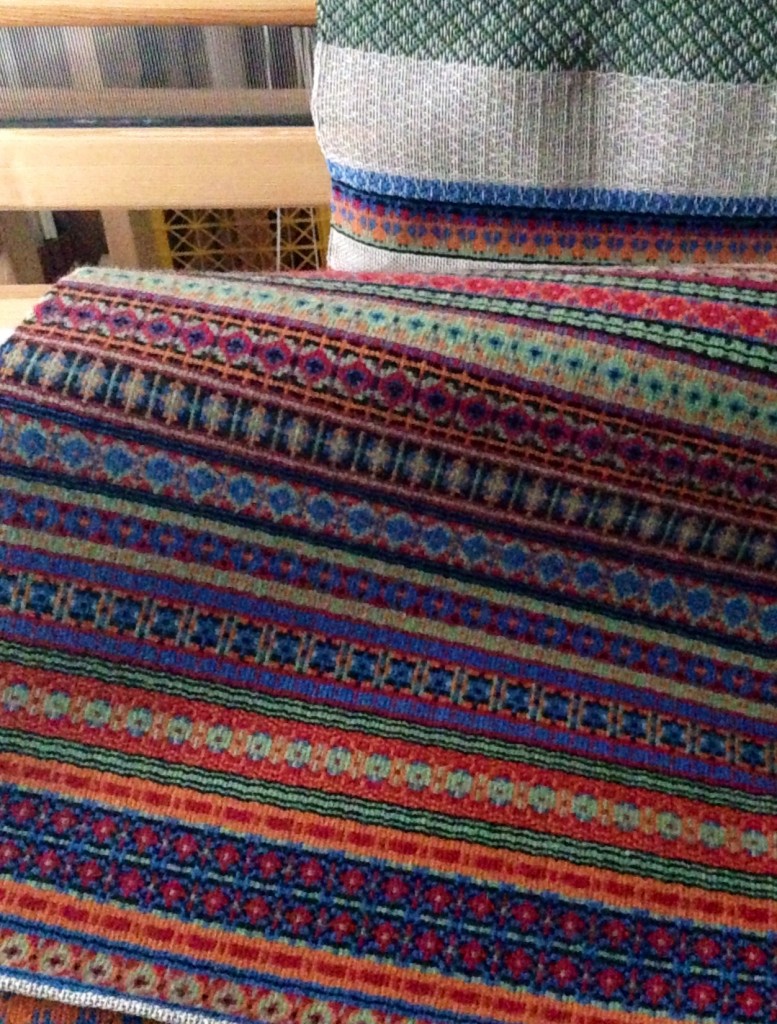
I was not ready to stop playing with this interesting weave structure, exploring the possibilites. Indeed, I had several more ideas lined up. If I had all the yarn in the world, I would need all the time in the world, too, because the discovery process is so intriguing. But eventually, I would run out of ideas.
We have heard that God is worthy of unceasing praise. Perhaps that is because there is no end to his love and goodness; and the riches of his mercy and grace are infinite. Maybe there are so many exquisite facets to learn about our creator that it will take eternity to discover them all. We might as well start now.
May you enjoy the intrigue of exploration and discovery.
Weaving onward,
Karen

